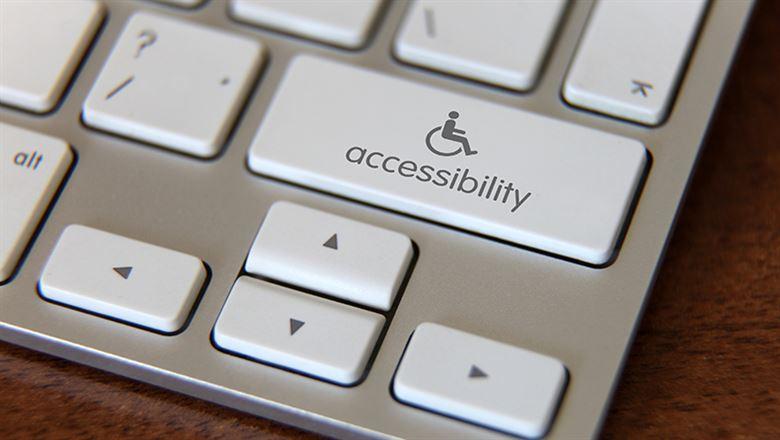How to Achieve Digital Accessibility

With nearly 20 percent of people worldwide having a disability and 21 million Americans reporting vision problems, having accessible websites, conference microsites, and mobile apps is a must. Four ways associations can tackle accessibility in the digital world.
The U.S. Census Bureau reports that more than 56 million Americans have a disability of some kind. The Global Economics of Disability Annual Report [PDF}, published in 2016, states that 1.3 billion people worldwide—nearly one in five people—have a disability, while a CDC report found that “21 million Americans report functional vision problems or eye conditions that may compromise vision.”
Of course, most people with disabilities are active online.
While U.S. federal agencies, private entities that receive public funding, and independent software vendors that sell to organizations that receive federal funding are required by law to make Information and Communication Technology (ICT) accessible, there are still many websites, applications, and other digital content that are not truly accessible.
For associations, providing a digitally accessible experience means building digital content and applications that can be used by people with disabilities. This can apply to websites, conference microsites, mobile apps, desktop apps, private online communities, and electronic documents. Many people with disabilities use some form of assistive technology to navigate computers and mobile devices.
Web Content Accessibility Guidelines (WCAG) are the global standard in digital accessibility guidelines. It enables all organizations to measure the accessibility of content, sites, and apps against documented success criteria for all people, including those with disabilities. The four principles underlying WCAG, typically shortened to POUR, are a good place to start if your association is looking to achieve digital accessibility.
Making sure that your digital content can be used by those that have disabilities, specifically involving disabilities around sight or hearing.
Perceivable
Making sure that your digital content can be used by those that have disabilities, specifically involving disabilities around sight or hearing. It is important to provide text alternatives for non-text content and to provide captions and other alternatives for multimedia. It is also important to create content that can be presented in different ways, including by assistive technologies, without losing meaning. One example would be screen readers. Can a screen reader like VoiceOver or ChromeVOx, process and relay the digital information effectively?
Operable
Not only is it important for all people to be able to perceive your content, but it is also important that a person can actually use it. Making functionality available from a keyboard, giving users enough time to read and use content, helping users navigate and find content, and making it easier to use inputs other than the keyboard are things to keep in mind in making sure your content is operable. It is also important to choose content and colors that do not cause seizures or other physical reactions. Commonly, these criteria are thought of as “tab-able.” Can a person only using the keyboard navigate media using a tab key?
Understandable
If your content cannot be understood by all users, what is the point? Make sure that text is readable and understandable, make content appear and operate in predictable ways, and help users avoid and correct mistakes.
Robust
A robust website is one that third-party technology (like web browsers and screen readers) can rely on. Your website must meet recognized standards, such as using clean HTML and CSS. This minimizes the risk of your users relying on technology that cannot correctly process your website.
Why should your organization strive to become more accessible? Integrating technology that is accessible and usable for everyone not only helps users but can help your platform be adopted by more people.
Accessibility also increases findability—many accessibility techniques will help your site’s search optimization, and if your site is screen reader-friendly, it’s also search-bot friendly. Plus, being accessible is inclusive and can help foster a more inclusive brand and a more inclusive workplace.
In the world of digital accessibility, even small updates can change the accessibility of a website. For example, if the wayfinding line on an expo hall map is green, it may not be seen by a colorblind individual unless the color contrast is great enough. By providing accessibility tools and options, the benefits of technology can be much more inclusive and help everyone enjoy and utilize the digital world.

